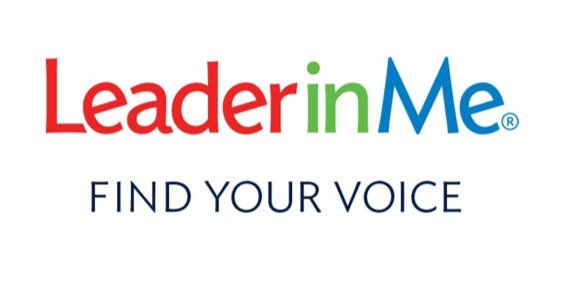Three Ways to Gamify Your Classroom for Better Outcomes
Self-Wellness Strategies for Trying Times with A.J. Lee - April 16, 2022

The first step to recovery is recognizing you have a problem. I was addicted to Sega Genesis’ Sonic the Hedgehog 2. I recognized the problem almost 25 years ago when I found myself hurrying through Sunday dinners and pleasant family conversation at my mother-in-law’s home. I was rushing so I could go to her basement to try to defeat the evil Dr. Robotnik within each of the ten increasingly more challenging zones.
As I watched my now-grown children and their friends experience short-lived addiction to various video games over the years, I often wondered what it is that makes these games so compelling in comparison to school. There are four basic elements that all games have in common: players, a goal, rules, and feedback. Classrooms in schools also have players (students), goals, rules, and feedback. Students could then, in theory, be just as excited about school as they are about playing Fortnite, Call of Duty, and Super Mario Brothers. Right?
I have recently challenged teachers I work with to find ways to “gamify” school—to make their classroom experiences more like the experience kids are having when playing games like World of Warcraft, Guitar Hero, and Minecraft. Some people balk at the notion of gamification in schools saying that education is not a game but real life. Gamification is based on science that is about as “real life” as it can get! When we gamify schoolwork, yard work, a job, or any potentially boring or unsavory work, we take advantage of the four major brain chemicals that influence happiness and create the cravings that drive positive habit formation. These chemicals are dopamine, oxytocin, serotonin, and endorphins. Gameplay floods players’ brains with these “feel good” chemicals in a way that creates a craving for more. Here are three ways teachers make this happen in classrooms and schools: create more challenge, practice weekly feedback cycles, and design more teamwork.
Create More Challenge
One of the definitions of the word challenge is “to arouse or stimulate especially by presenting with difficulties.” I have always believed that many of the things that people think are “fun” are also challenging; activities like golf, playing card games, reading, hiking, playing a musical instrument, completing puzzles, solving riddles, playing chess, rock-climbing, river rafting, biking, fishing, birding, etc. One of the qualities designed into successful video games is that they are just challenging enough to keep players coming back, but never so hard that people lose hope of making progress and quit playing. Imagine a classroom environment where the work is just challenging enough—where students with a growth mindset know that, while what they are being asked to learn and do may be difficult, there will be a sense of accomplishment that comes from persistence. The most rewarding games/classrooms push players/students into mastering new skills rather than forcing them to do the same thing repeatedly. Players/students get a sense of accomplishment for doing things in a game/class that were once impossible, and every step, level change, and challenge met give players’ brains a dopamine hit. The mere anticipation of success causes a spike in dopamine levels which contributes to alertness, focus, happiness, and motivation.
Practice Weekly Feedback Cycles
The human brain craves the “happiness” chemicals that coincide with instant gratification, fast pace, and unpredictability. All three characteristics can be found in the best video games and the most engaging classrooms. Without some special effort, it is easy for teachers to fall into the habit of infrequent and ineffective graded quarterly summative assessments supported by a plodding and predictable daily routine that will cause all but the most energetic kids to put their heads on their desks to pass out for want of meaningful stimulation.
When we feel a sense of accomplishment at overcoming a challenge, we are feeling the effects of serotonin, which creates strong, positive emotions. We feel these same positive feelings when we receive recognition from others. Game developers leverage this chemical and the feelings of loyalty and accountability that come from heightened levels of serotonin by using scorekeeping, badges, levels, medals, and various achievements. Games allow players to see that they are making progress, that they are getting better, that they are ever closer to the goal. In the best classrooms, teachers provide students with opportunities for weekly, if not daily, or even hourly feedback on their work, behavior, participation, etc. In his book How to Create a Perfect School, author Lee Jenkins recommends that teachers inform students of all the key concepts they will need for the entire year and then quiz students seven times per quarter (W. Edwards Deming suggests weekly) on a random selection of those concepts. These weekly “checks” are not graded, rather students are asked to graph the number of correct answers they get on a run chart to show progress, and everyone celebrates when students, classes, or the entire school achieve “All-Time Bests” or an ATB. Concrete rewards like pizza parties, extended recess, and paper certificates tend to drive students to get the extrinsic reward rather than knowledge and should be avoided in the classroom.
Design More Teamwork
One of the most attractive developments in the gaming world is the ability to play with others online. Players “squad up” to defeat a common enemy, solve a problem, or move through different stages of a game. Research shows that when gamers play character-driven games, oxytocin is released as they form an affinity for and a kinship with the characters in the game. Belonging and friendship are psychological needs in Maslow’s well-known hierarchy of needs. Positive social interactions in the classroom tend to be the best way to increase the output of oxytocin in the brain. Working collaboratively with others to solve difficult challenges is something that happens in games and in the best classrooms. As teachers design activities that allow students to collaborate, they respond to the challenge and get a double dose of “feel good” to the brain. The well-designed assignment forces students to develop new skills, and the anticipation of progress or success provides the dopamine boost that inspires commitments and continued effort. Working with friends adds oxytocin (and maybe even a little adrenaline) to the brain cocktail and makes school an even more attractive place to be.
Conclusion
Right or wrong, educators are in stiff competition with video games (and social media) to win the effort and attention of students. Games have what seems like inherent advantages that appear insurmountable. However, the truth is that every teacher can compete and win this critical battle for the mindshare of students by offering bigger challenges, providing performance feedback in a consistent weekly rhythm, and designing classroom activities that demand more teamwork from students.



